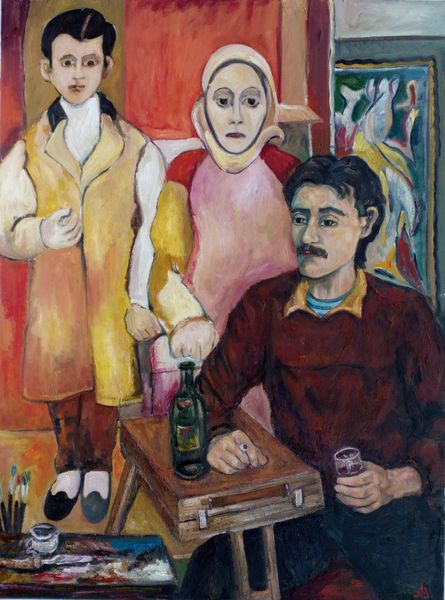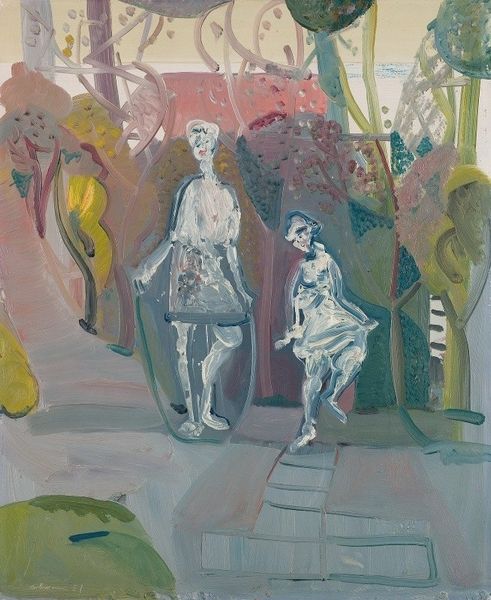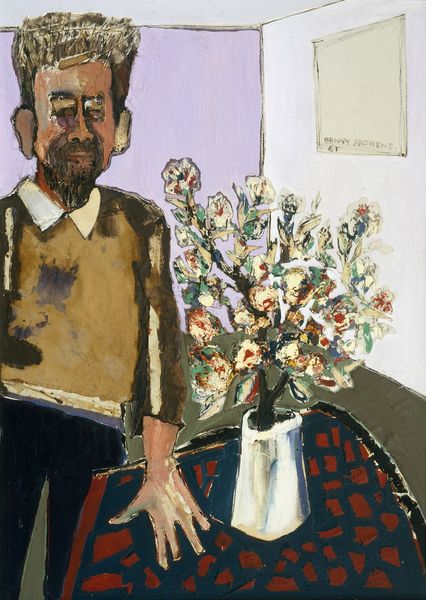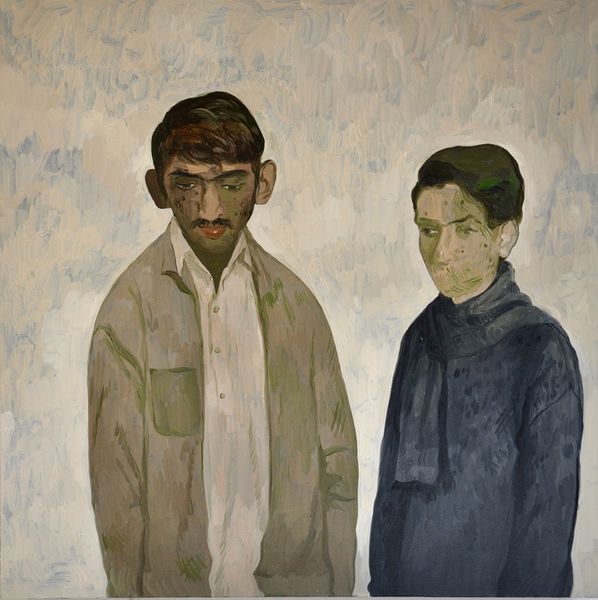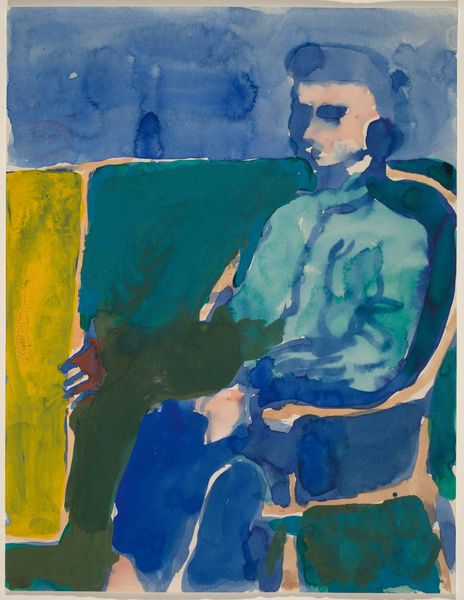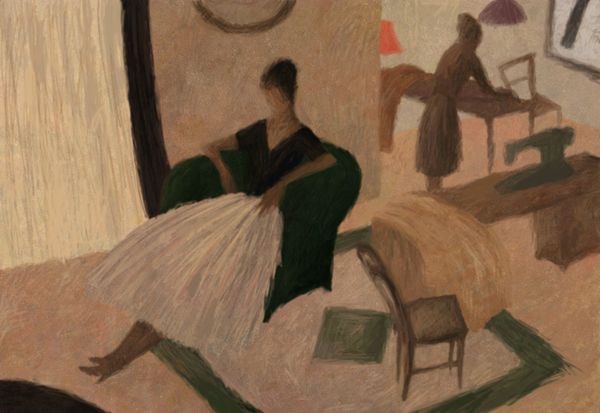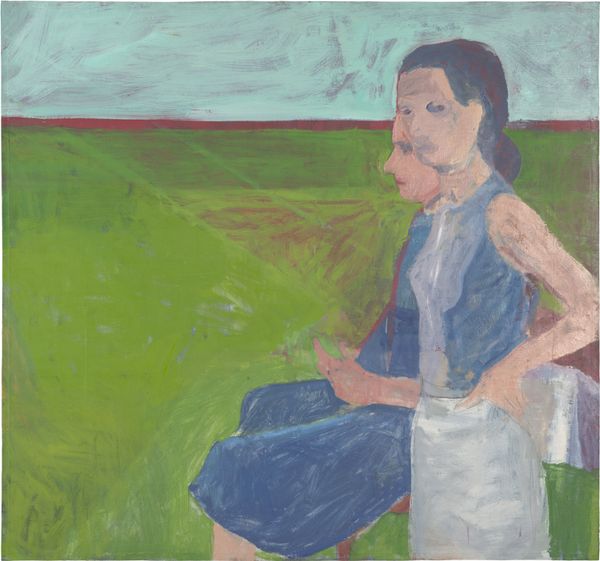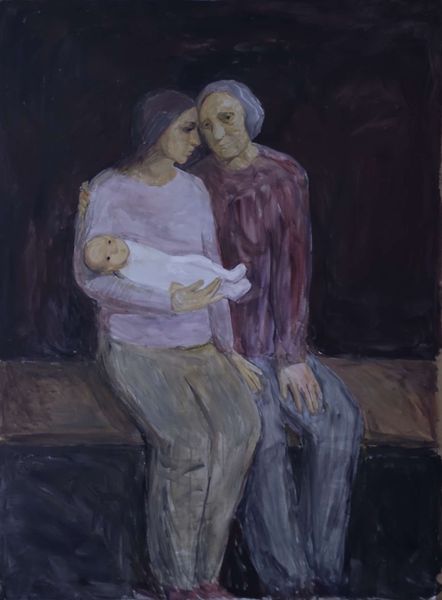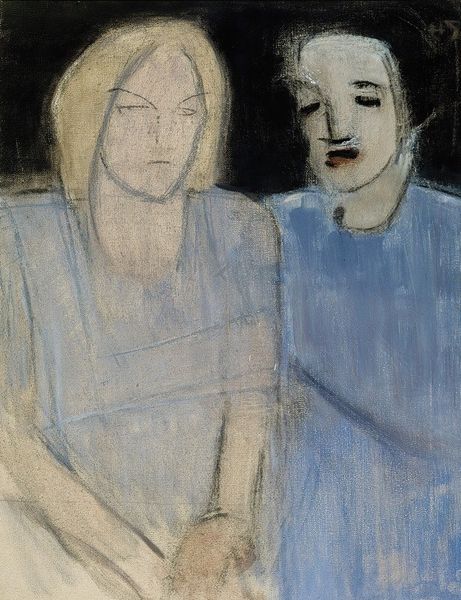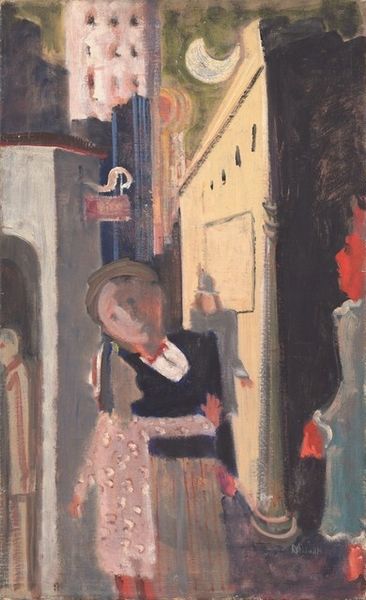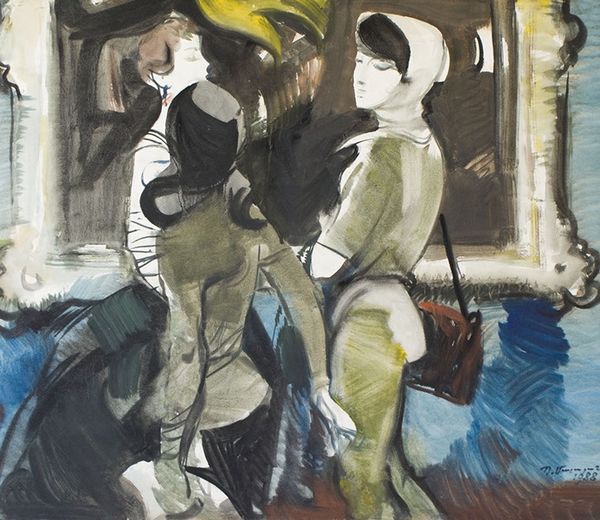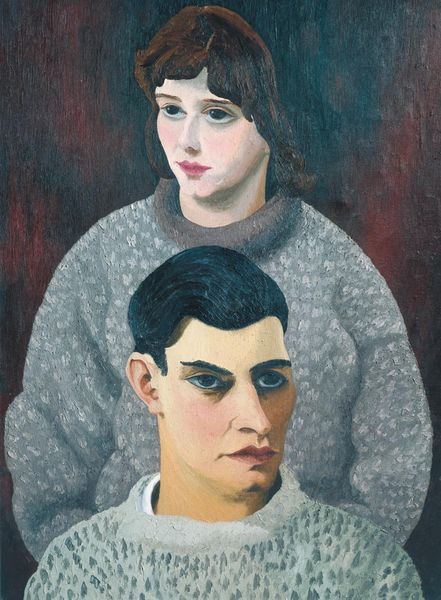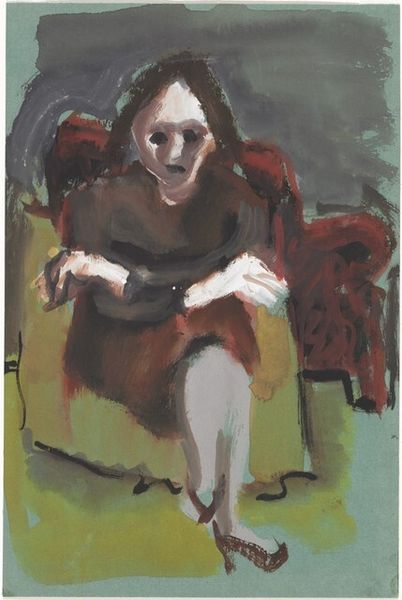
oil-paint
#
portrait
#
self-portrait
#
oil-paint
#
figuration
#
oil painting
#
group-portraits
#
abstraction
#
modernism
Copyright: Public domain
Editor: So, here we have Arshile Gorky’s 1942 painting, "The Artist and His Mother," currently housed at the National Gallery of Art. Painted with oils, this portrait possesses such a melancholic atmosphere, with both figures looking directly at the viewer with rather forlorn expressions. What social factors do you believe contribute to the somber mood in this work? Curator: That's a perceptive observation. I see this painting as deeply intertwined with Gorky’s biography, specifically the Armenian Genocide of 1915 and its continuing effects. Consider this piece in the light of refugee and immigration narratives, where family photographs often become precious links to a lost homeland. Editor: So, is the portrait functioning as more than just an image of his mother, but as a preservation of culture and memory? Curator: Precisely. Notice how the composition references an old photograph, and yet Gorky abstracts the figures. Do you see the potential for this artistic license to reflect a disruption of personal and cultural history? Editor: Absolutely. The way forms are simplified, almost flattened, could mirror the fragmented experience of displacement, and the muted color palette contributes to the overwhelming sense of loss. Curator: Indeed, the muted tones create a kind of ghostly presence. Museums function as spaces that grapple with such socio-political dynamics, offering ways for painful histories to be seen and reckoned with through art. In his role as a modernist, Gorky translated deep anguish into enduring symbols. Editor: I hadn't considered the gallery itself as shaping my viewing experience, or its influence on art as an active engagement in social issues. Curator: Thinking about how art engages the public can alter your interpretations drastically!
Comments
No comments
Be the first to comment and join the conversation on the ultimate creative platform.
